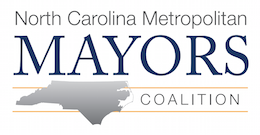Conti Urges Subcommittee to Support Variety of Financing Sources (AASHTO Journal)
April 16, 2010
In light of falling gas-tax revenues and the increasing complexity of many transportation infrastructure projects, a number of federal financing sources need to be made available to state DOTs, North Carolina Transportation Secretary Gene Conti told the House Highways and Transit Subcommittee at a Wednesday hearing on using innovative financing to deliver highway and transit projects.
“None of these projects anymore are very easy to do from a financial perspective, so you really have to be creative and look at all the tools and then package them together,” Conti said. “The important thing is to have a range of tools available and then to have a one-stop shop, if you will, at the federal level so you can deal with one agency or one office that can help you walk through the alternatives.”
An infrastructure investment fund proposed by the Obama administration could function as a clearinghouse for transportation funding options other than the current gasoline and diesel-fuel taxes that generate the bulk of revenue for the Highway Trust Fund, the U.S. Department of Transportation’s chief financial officer told the subcommittee.
President Barack Obama has proposed in his Fiscal Year 2011 budget request creating a National Infrastructure Innovation and Finance Fund with $4 billion in capital. It could help states and localities secure nontraditional funds by consolidating various targeted financing programs such as the Transportation Infrastructure Finance and Innovation Act program known as “TIFIA,” BNA reported.
“That is one of the points of having an infrastructure fund — that you would have one entity within the Department of Transportation that a project sponsor could go to and get either loans, loan guarantees, grants, or a combination of those,” U.S. DOT’s CFO Chris Bertram testified.
A proposed National Infrastructure Innovation and Finance Fund could include TIFIA, the GARVEE bond program where states borrow against future federal transportation grants, the Build America Bonds program created by the American Recovery and Reinvestment Act of 2009, and private activity bonds used to fund private-sector activities.
Rep. James Oberstar, D-MN and chairman of the full House Transportation and Infrastructure Committee, said while states are able to tap a number of financing programs from the federal government, they don’t add up to sustainably funding the U.S. transportation network.
“The Highway Trust Fund revenue stream should be keeping pace with the costs of construction and the capacity needs of the system, and we should be increasing that revenue stream,” Oberstar said. He recently proposed that the U.S. Treasury Department loan the Highway Trust Fund $130 billion, which would be paid back years later with an increase in federal gasoline and diesel taxes. (see April 2 AASHTO Journal story)
Other witnesses who addressed the committee at Wednesday’s hearing were Phillip Washington, general manager and CEO of the Regional Transportation District in Denver; Arthur Leahy, CEO of the Los Angeles County Metropolitan Transportation Authority; and Jeffrey Parker, president of Jeffrey A. Parker & Associates. All witness statements and video of the hearing are available at tinyurl.com/HHTS041410.


